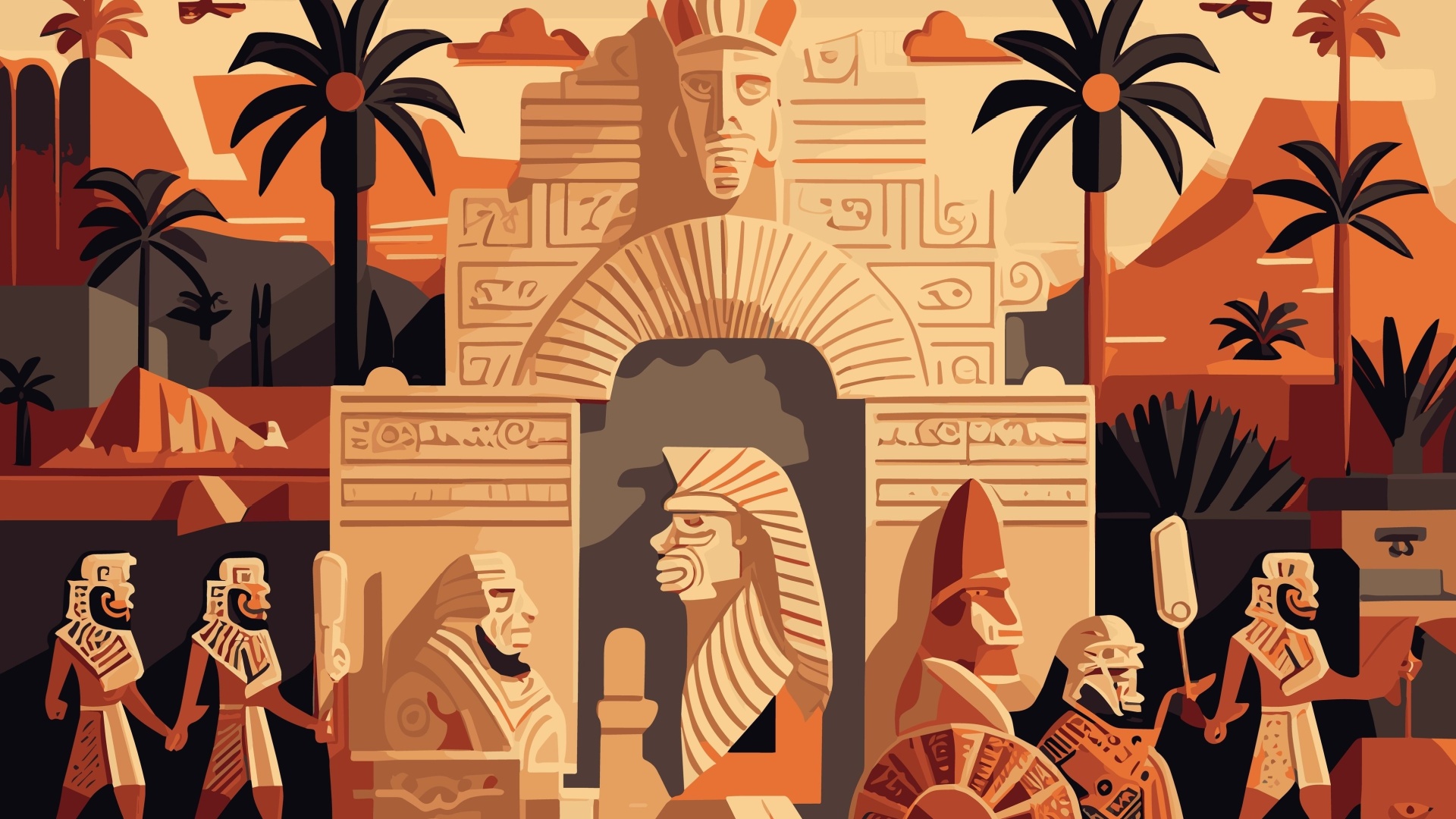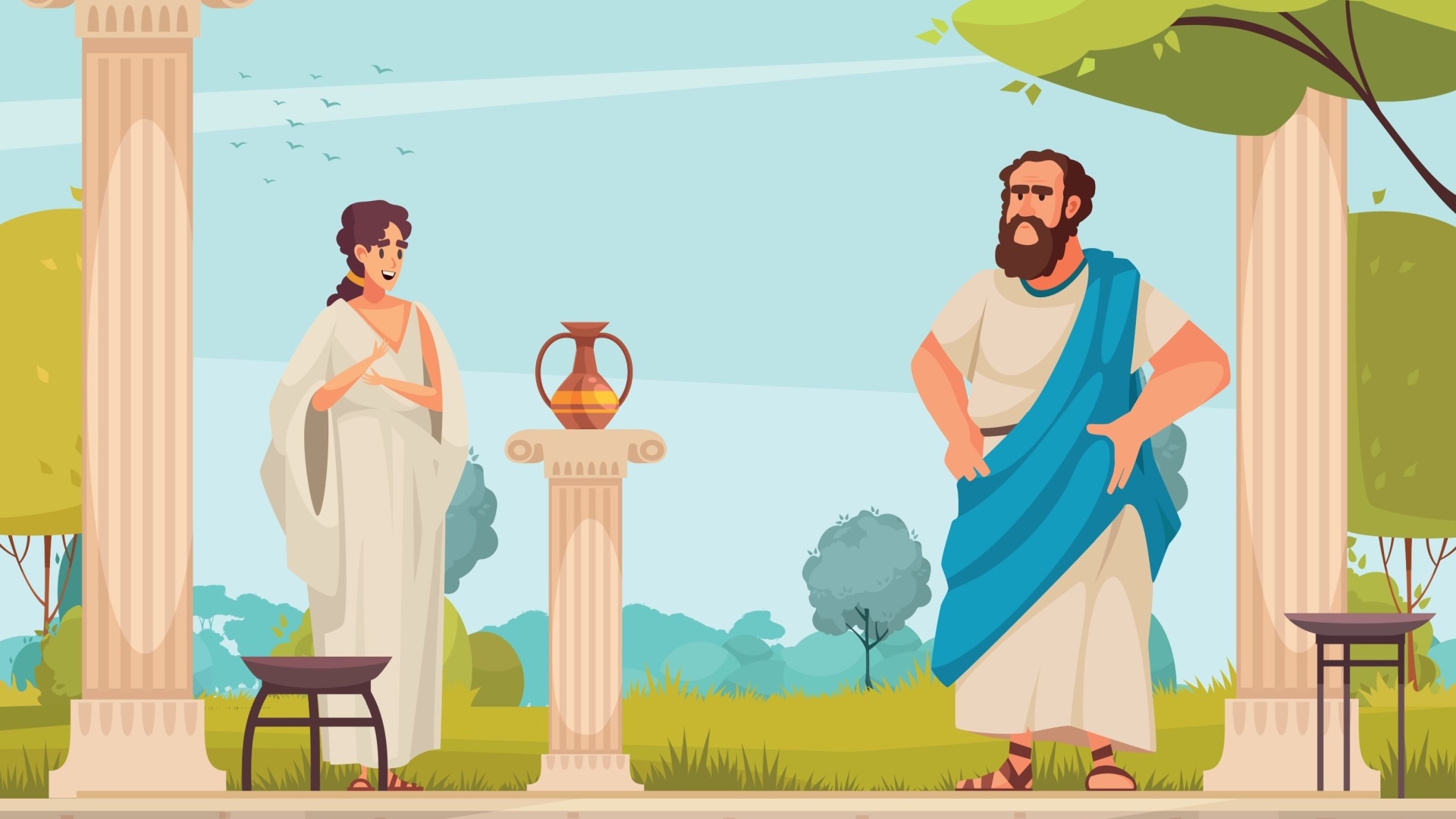The Origins of Feminism: The Most Prominent Female Names of the Ancient World
In the history of the ancient world, women’s names remembered for their achievements and discoveries are more the exception than the rule. For centuries, women were deprived of access to education, excluded from political life, barred from building careers or running their own businesses. Those who dared to cross these boundaries were often scorned and condemned. And yet, their names have endured through history.
In this article, we remember the most influential women of antiquity — scholars, educators, and priestesses.
Hypatia of Alexandria
She was a distinguished philosopher, mathematician, and astronomer. Her name became a symbol of resistance against intellectual discrimination based on gender.
Hypatia was born around 350 CE in Alexandria — one of the major intellectual centers of the ancient world. Her father, himself a mathematician and philosopher, encouraged her thirst for knowledge and personally taught her the fundamentals of many sciences. Hypatia had a keen interest in mathematics and astronomy. She later created a special instrument for measuring and observing celestial bodies — the astrolabe.
Hypatia also became known as a prominent figure of Neoplatonism, a philosophical and religious idealist school of thought. A gifted orator, she gained fame throughout the Greek-speaking world (at the time, Alexandria was a Hellenistic city, not part of Egypt as it is today). She lectured in public squares and eventually began holding gatherings in her home. Contemporary philosophers noted that Hypatia could effortlessly engage passersby in philosophical discussions.
Among Hypatia’s students were future political leaders, such as Synesius of Cyrene, who became a bishop in the city of Ptolemais, and Pentadius, who served as imperial prefect of Egypt. They all described Hypatia as a wise and learned woman who generously shared her knowledge and never ceased her own pursuit of understanding.
Hypatia is also known for her commentaries—or what we might today call reviews—of works by other scholars and philosophers. For instance, she edited Conics, a treatise by Apollonius of Perga on conic sections. Her contributions helped preserve and clarify knowledge of hyperbolas, parabolas, and ellipses. Thanks to Hypatia, these concepts became more accessible, aiding in their transmission through the ages. She is also believed to have worked on the development of a distillation apparatus, invented the hydrometer for measuring the density of liquids, and created a planisphere (a star map).
Hypatia died a tragic death. Despite the spread of Christianity, she remained a pagan. Followers of the new faith saw her as a threat, publicly denounced her, and accused her of sorcery. In 415 CE, a mob of Christians is believed to have attacked and brutally murdered her. The historian Damascius claimed that her body was torn apart.
By the 19th century, Hypatia had come to be regarded as a pagan martyr who died for her beliefs. However, some historians suggest her murder was politically motivated. Hypatia was known to be close to the Roman governor Orestes, while the Christian bishop Cyril opposed Orestes’ rule. After Hypatia’s death, few were able to challenge Cyril, and Orestes soon withdrew from politics.
Enheduanna

Writing is believed to have originated in Sumer around 3400 BCE — but in truth, it began nearly a millennium earlier. During this time lived one of the earliest known poets whose name has survived to this day: Enheduanna.
An Akkadian princess, Enheduanna was born around 2285–2250 BCE, the daughter of King Sargon. When he conquered the city of Ur, his daughter was appointed high priestess. Enheduanna became the high priestess of the moon god Nanna in Ur and revered the goddess Inanna above all others in the Sumerian pantheon. While serving in Ur, she began composing poetry. Most of her works were dedicated to Mesopotamian goddesses, though some also expressed personal grief, emotions, and inner life.
She authored numerous religious texts, known as the Hymns to Inanna. These are the earliest known examples of signed literature in human history. It is said that through her prayers to Inanna, Enheduanna helped the Akkadians secure nine victories over the Sumerians, enabling her nephew Naram-Sin to unite the two lands under his rule for several years.
These hymns are also the earliest known instances of first-person narrative. They were dedicated to temples across Sumer and Akkad. One such text, Nin-me-sara, was considered sacred for at least 500 years after Enheduanna’s death. Its popularity is evident from the numerous copies that have survived. The hymn was also used to train scribes, contributing to her legacy as the “Shakespeare of Sumerian literature.”
Aspasia of Miletus
Aspasia’s name is often associated with the rise of Athens as a cultural center.
She was born around 470 BCE in Miletus. Upon moving to Athens, Aspasia became the companion, close confidante, and political advisor to the statesman Pericles. She was widely believed to have wielded considerable influence over him — to the point that many attributed his political decisions to her counsel.
Aspasia likely did influence Athenian politics. Contemporary accounts suggest she taught oratory and edited Pericles’ political speeches. Some historians believe she helped craft his famous funeral oration delivered at the outset of the Peloponnesian War.
Aspasia also pursued educational efforts. She was the first woman in Athens to establish an informal school for other women. People gathered at her home to study philosophy, rhetoric, and the art of dialogue — disciplines traditionally off-limits to women. This made her one of the earliest advocates for women’s education in the ancient world.
Her salon attracted not only women but also intellectuals from across Greece — sculptor Phidias, philosophers Anaxagoras and Socrates, historian Herodotus, and many others. Aspasia often employed the Socratic method in her discussions. Some believe that Socrates himself may have been her student.
Leontion

The well-known ancient Greek woman philosopher Leontion, sometimes spelled Leontia, was associated with the Epicurean school of thought, which held that the highest good is pleasure.
In 306 BCE, when Epicurus founded his school in Athens, Leontion joined his circle. She was considered controversial due to her past as a hetaira (courtesan), but that did not prevent her from becoming a close friend of Epicurus and an active member of his intellectual community.
Leontion holds a unique place in the history of ancient thought — as one of the few female philosophers who openly engaged in the intellectual debates of her time and contributed to the development of ethics and critical thinking. She not only studied philosophy but also debated other thinkers.
She is known to have written a detailed treatise refuting the philosopher Theophrastus, Aristotle’s successor. Cicero remarked that Leontion wrote with wit and in a pure Attic style — concise and precise. Epicurus praised her for her “impeccable reasoning” and “extraordinary clarity.”
Though her own writings have not survived, Leontion left a notable legacy as a woman who dared to enter the male-dominated world of philosophical discourse and proved that intellectual excellence transcends gender.
She is also mentioned in On Famous Women, a treatise by Italian Renaissance poet and author Giovanni Boccaccio.
Theano of Croton
Theano (or Theano) of Croton was a philosopher and mathematician who lived in the 6th century BCE and belonged to the Pythagorean school. She was the partner and companion of Pythagoras and continued to lead his school and expand upon his ideas after his death.
Theano authored several works, including On Virtue, as well as many apophthegms or philosophical aphorisms. One of them, reflecting on the immortality of the soul, states: “If the soul is immortal, then life is truly a feast for villains who die after a life of wickedness.” Reincarnation was a key tenet of Pythagorean doctrine.
In her writings, Theano addressed issues of marriage, female morality, and virtue. She emphasized the importance of reason, emotional balance, and self-discipline — not only for men but also for women. In this, she offered an early model of female philosophical self-sufficiency.
Theano is believed to have advocated the view that women are capable of achieving higher knowledge and moral development if given the opportunity to be educated — a rare stance for her era. The Pythagorean school was one of the few philosophical communities that admitted women. Theano likely played a crucial role in shaping this inclusive tradition. Records indicate there were several dozen female Pythagoreans, with Theano being the most renowned.
Beyond philosophy, Theano was also interested in science, particularly mathematics. She is believed to have continued developing the concept of the golden ratio — the harmonious proportion underlying beauty and order in nature.
Dibutades

Thanks to Dibutades (also known in some sources as Kora or the Maid of Corinth), portrait painting is said to have been born — at least according to the Roman historian Pliny the Elder. Intriguingly, her story survives only through Pliny’s account, so it may be more legend than fact. Nonetheless, it is significant because it marks the first known attribution of an invention to a woman — naming her as the first artist in history, or more precisely, the “mother of painting.”
According to the legend, Dibutades was the daughter of a potter named Butades and worked as a servant in Corinth. She fell in love with a young man who was soon to leave on a long journey. Wanting to preserve his image, she traced the outline of his shadow on a wall. Her father filled in the outline with clay and fired the resulting figure in his kiln. Thus, the first portrait was created.
Whether or not Dibutades truly existed, her story was supported and retold by Leonardo da Vinci, Quintilian, and Giorgio Vasari. For centuries, it inspired artists, poets, and art historians — symbolizing the link between love, memory, and visual art. During the Renaissance and beyond, Dibutades was remembered as the “mother of art,” and the motif of drawing a silhouette from light appeared in many works, from engravings to paintings.
Dibutades can rightfully be considered one of the first legendary women in the history of visual art. Her name became more than myth — it stands as a powerful reminder of the female gaze and women’s role in the birth of visual expression.
The life stories of each of these women are tales of breaking boundaries, challenging stereotypes, and standing firm against discrimination. Their voices resonate all the more powerfully today — reminding us that the pursuit of knowledge and self-expression is timeless, unrestricted by barriers or stigma.


